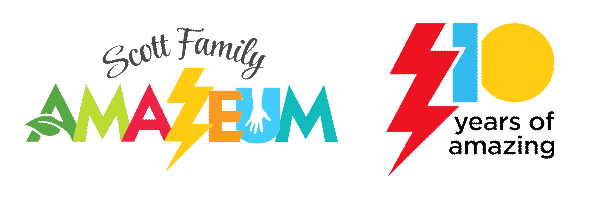Summer Adventures Start Here!
Learning Beyond the Amazeum
When summer rolls around, kids are ready to move, explore, build, and ask questions. At the Amazeum, those instincts are celebrated through hands-on experiences that connect play with learning in creative, meaningful ways. But curiosity doesn’t have to stop when you leave the building.
This summer, let your visit to the Amazeum be the beginning—not the end—of your family's learning journey. Many of our most popular exhibits offer jumping-off points for activities you can do at home or out in the community. Below, we’ve gathered a few simple ways to extend the ideas sparked in our exhibits into real-world adventures.
Build, Tinker, Try Again
In the 3M Tinkering Hub, kids use real tools and materials to test their ideas, revise their thinking, and explore how things work. At home, you can create a similar environment by setting up a “tinker station” using materials you already have—cardboard, tape, scissors, string, and recycled containers.
Encourage your child to take on a challenge: Can you build a tower as tall as you? A vehicle that rolls? A contraption that moves a ball from one side of the table to the other? It doesn’t have to be polished. In fact, the mistakes along the way are where the learning happens.
Want to go further? Visit a local hardware store and explore how real-world tools function—and maybe even add a new one to your home collection.
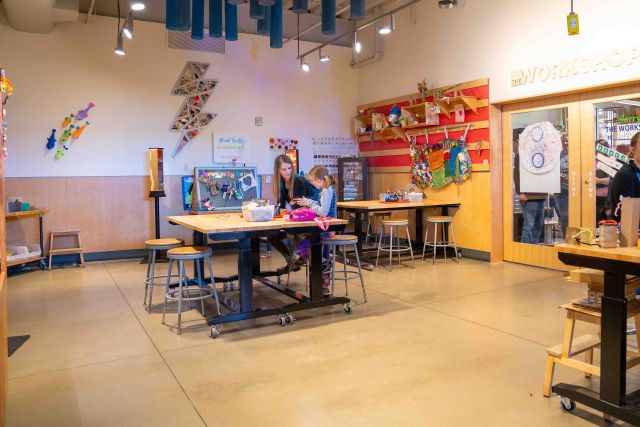
Science You Can Taste
Experiments feel a little more exciting when there’s chocolate involved. In the Hershey’s Lab, guests explore chemistry through edible experiments.
You can keep the scientific momentum going in your own kitchen. Melt chocolate and test how quickly it hardens under different conditions. Mix sugar into hot and cold water and compare how it dissolves. Even baking a batch of cookies can spark questions about states of matter, heat transfer, and measurement.
Turn these kitchen experiments into a mini “lab session” by writing predictions before you begin and reflecting afterward. Science, snack, and learning all in one.
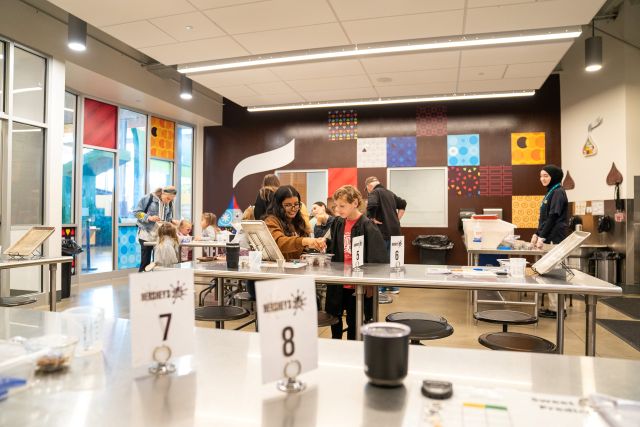
Machines in Motion
The General Mills Lift, Load & Haul exhibit invites guests to explore simple machines, force, and motion. This kind of exploration can easily translate to your backyard or living room.
Try creating your own pulley system with a spool and string. Set up an obstacle course where kids must transport a small object without using their hands. Use blocks or books to build ramps and see how different materials roll—or don’t. Then ask, “How could we make this faster? Slower? Better?”
Better yet, watch construction vehicles at a local site from a safe distance. Notice how levers, wheels, and pulleys work together to move big materials.
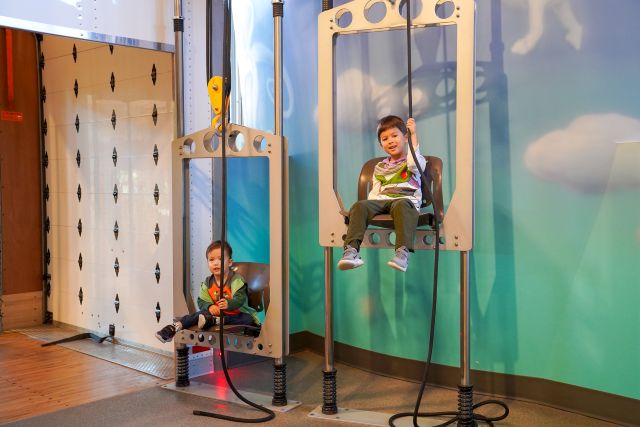
Imaginative Play with a Purpose
In the Walmart Market, kids step into real-world roles as shoppers, cashiers, and store managers—developing communication, math, and social skills through pretend play.
Recreate that experience at home by setting up your own family market. Use real pantry items, paper price tags, and play money. Rotate roles so everyone gets a turn managing the store. For an extra challenge, set a budget and ask your child to “shop” for a full meal.
The next time you’re out shopping, give your child a small job—like weighing produce or comparing prices—to keep building confidence and real-world skills.
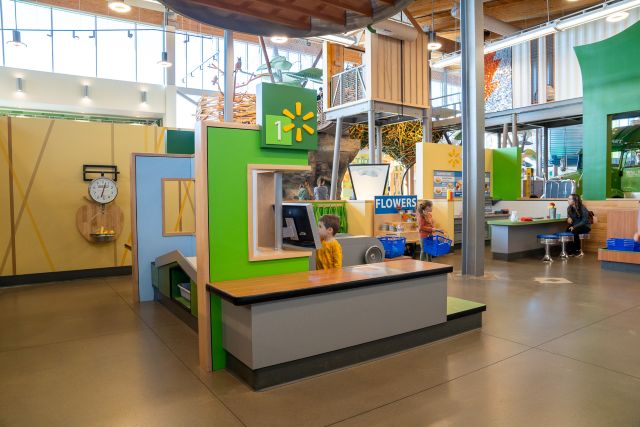
Let Water Do the Teaching
Water play is more than fun—it’s full of opportunities for discovery. In the Nature Valley Water Amazements, kids experiment with flow, pressure, and cause and effect.
You can recreate this experience at home with bins, funnels, tubing, and a hose. Create your own water wall by attaching containers to a fence or railing. Fill different vessels and see which pours faster. Test what sinks, floats, or flips over in water.
Local parks, splash pads, and creeks also offer natural opportunities to explore how water moves and changes depending on its environment.
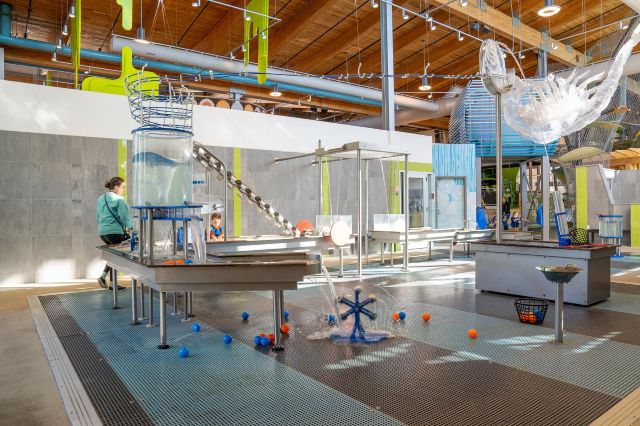
Create Without Instructions
In the Art Studio, the focus is on how kids create—not just what they make. They’re encouraged to explore materials, try new techniques, and experiment freely without needing a final, polished result.
At home, offer your child an open-ended invitation to create. Provide a mix of supplies—cardboard, string, foil, fabric, markers—and a simple prompt like, “Make something that moves,” or “Design a costume for an imaginary creature.” Step back and let them take the lead.
Talk about the process. What choices did they make? What might they do differently next time?
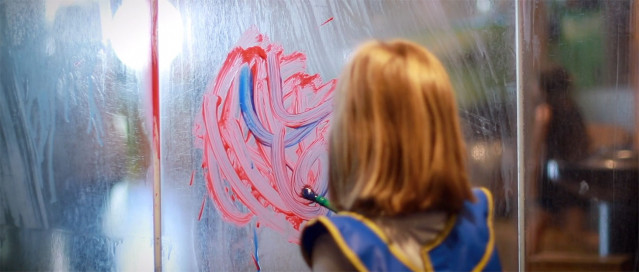
Notice What’s Above and Around
Our Cloud Theater and Nature & Weather exhibit help guests explore light, shadow, weather, and the science of observation. These are ideas that can easily be explored from your front porch or on a walk around the neighborhood.
Keep a simple cloud journal by sketching the sky each day and noting the weather. Use a flashlight to explore shadows inside. Track how the sun moves across your backyard by placing objects outside in the morning and checking their shadows in the afternoon.
When kids start noticing how the world works, their questions deepen—and that’s where discovery begins.
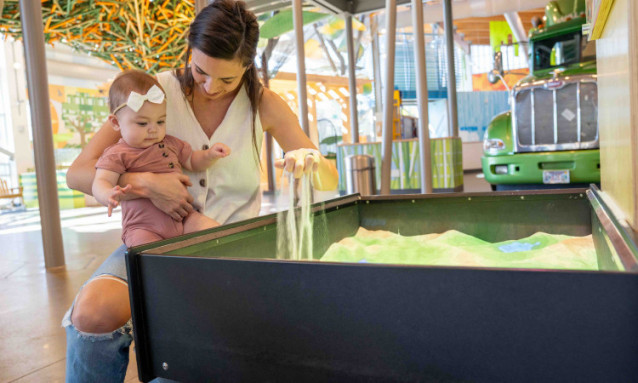
Move and Explore
Gross motor play—activities that build coordination, balance, and strength—is essential to healthy development and learning. The Canopy Climber, Outdoor PlayScape, and Homestead Cabin & Farm encourage kids to climb, balance, explore nature, and engage with their environment.
Recreate these experiences with a backyard obstacle course or nature scavenger hunt. Use pool noodles, ropes, and cardboard for challenges like crawling under, stepping over, and balancing along paths. Visit a local farm, farmers market, or nature trail and compare what you see to what your child experienced in the exhibits.
Add simple challenges like, “Can you move through this course without making a sound?” to build observation and focus.
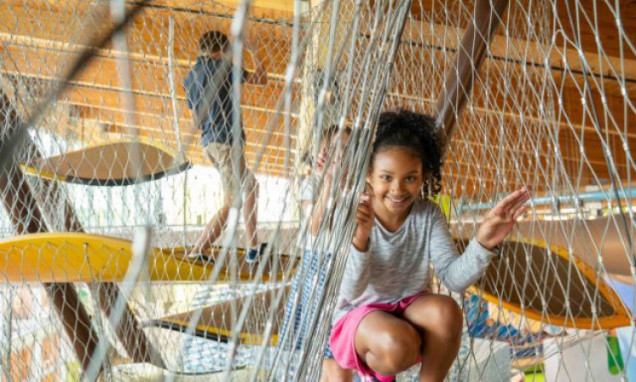
Learning for Littles
Our youngest guests experience the museum a little differently—and that’s by design. Studio Grow and Emerging Explorers create developmentally appropriate spaces for early learners to move, touch, explore, and play with purpose.
At home, focus on textures, sounds, and repetition. Try making your own playdough and invite kids to squish, mix, and explore with simple tools. You can also encourage creative expression with sticky murals using window clings or painter’s tape, or try water painting on rocks to explore cause and effect. Use painter’s tape to make simple floor mazes or balance paths for crawling and walking. Everyday moments like snack time or bath time can become opportunities to practice language and motor skills.
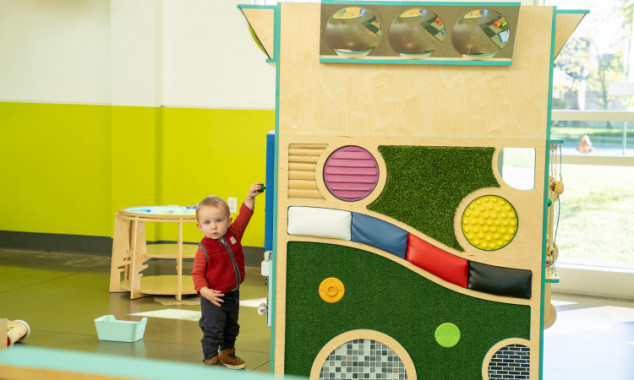
Keep Curiosity Moving
A visit to the Amazeum doesn’t end at the exit—it’s a starting point. Whether you're building, baking, observing, or just asking “why,” learning can happen anywhere. This summer, we invite you to take what sparked your child’s interest and follow it into the backyard, the kitchen, the park, or the trail.
Curiosity is always welcome—and it travels well.

